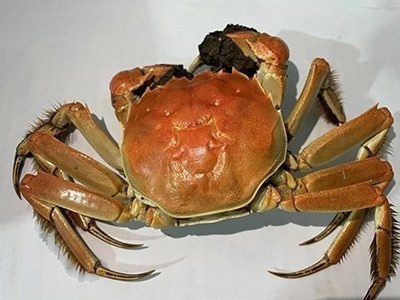Anyone who has ever enjoyed lobster tails or fresh crab legs can confirm how challenging it is to get through their tough shells. However, rather than simply discarding them, scientists are “upcycling” these shells into porous, carbon-filled materials with extensive applications.

Crab shells, like the one pictured here, could be “upcycled” to help make new battery materials. Adapted from ACS Omega, 2023, DOI: 10.1021/acsomega.2c06429. Image Credits: American Chemical Society
A team has employed this “crab carbon” to develop anode materials for sodium-ion batteries, which is a promisingalternative to lithium-ion chemistries. The study was reported in the journal ACS Omega.
In recent years, lithium-ion batteries have become universal, powering cars, phones, and even toothbrushes. However, as there are worries that the quantity of lithium metal in the world will not satisfy growing demands, some scientists have shifted their focus to its “chemical cousins.”
Earlier, scientists developed a biodegradable zinc-ion battery with the use of the chitin present in crab shells. But these wastes can be turned into “hard carbon” alternatively. “Hard carbon” is a material that has been discovered as a likely anode for sodium-ion batteries.
Despite being chemically similar to lithium, sodium ions are bigger and hence not well-suited to the anode of a lithium-ion battery, usually formed of graphite. The material can become a functional battery anode by combining hard carbon with metallic semiconductor materials, like transition metal dichalcogenides (TMDs).
Therefore, Yun Chen, Yue Zhao, Hongbin Liu, and Tingli Ma wished to analyze how two different TMDs—iron sulfide and tin sulfide—can be combined with hard carbon made from crab shells to create a feasible sodium-ion battery anode.
The scientists heated the crab shells to temperatures over 1000 F to develop their “crab carbon.” Then, they added the carbon to a solution of either iron sulfide (FeS2) or tin sulfide (SnS2). Later, they dried them to produce anodes. The fibrous, porous crab carbon structure offered a large surface region, enhancing the material’s conductivity and capacity to transport ions successfully.
Upon testing in a model battery, the researchers discovered that both composites had decent capacities and could last for a minimum of 200 cycles. The scientists state that this study can offer a way to upcycle other wastes and aid in creating more sustainable battery technologies.
The study was funded by “Nanotechnology Platform Program” of the Ministry of Education, Culture, Sports, Science and Technology (MEXT), Japan; the National Natural Science Foundation of China; the Taishan Scholars Program of Shandong Province; and the Academic Promotion Program of Shandong First Medical University.
Journal Reference:
Chen, Y., et al. (2023). Crab Shell-Derived SnS2/C and FeS2/C Carbon Composites as Anodes for High-Performance Sodium-Ion Batteries. ACS Omega. doi.org/10.1021/acsomega.2c06429.